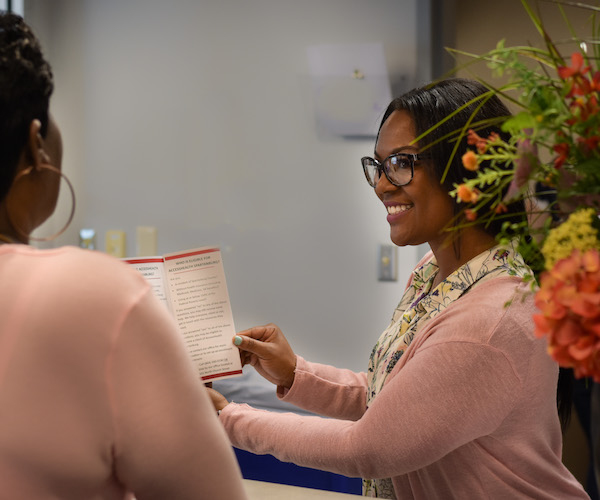
What Does it Mean to be a Connector Program?
July 11th, 2019
Nationwide, communities of all sizes grapple with building and sustaining the services that improve health outcomes and reduce health inequities. There rarely are adequate resources to fully address challenges that are generational in nature.
At the same time, a community’s available resources, services and assets are rarely leveraged either as efficiently or as cohesively as possible. The phrase “working in silos” is often used. When organizations and agencies don’t know what others in their community are doing — or worse, don’t even know that a service exists — resources can be wasted on duplication while opportunities to partner, help more people and ultimately make a larger collective impact are never realized.
How care navigators make connections
That’s where AccessHealth Spartanburg is making a difference. AHS is a connector — its care navigators work with clients to determine their needs and then connect them to the organizations, resources and services in the community that can help. AccessHealth Spartanburg care navigators are uniquely qualified to do this because of their knowledge of and relationships with the relevant organizations and service providers in the community.
“The needs assessments we complete serve as a clearinghouse to determine what you might need and be eligible for,” AHS Director Summer Tebalt explained. “Some of those, like the SNAP application, we can do in our office. For others — like housing assistance — we connect you to community partners. We have a wide network of community partners and we are able to connect you to resources in a trusted environment.”
AHS also understands the policies and ins and outs of the services they connect clients to. Care navigators ensure their clients are prepared for entering those programs and have any and all information, documents and other requirements needed.
“There are churches, non-profits, agencies and other organizations with programs, and they all have funding, application and assistance cycles,” Tebalt said. “And so knowing when and who to connect with, and knowing the most effective route to get from point A to point B is what our staff is so good at. They have built relationships, they are in meetings across the community, they know who is doing what and what’s going on.”
Relationships years in the making
These relationships and institutional knowledge have been developed over many years. It is the result of an intentional effort.
“One of the things our leadership has done is to ensure no one person holds all the knowledge,” said Carey Rothschild, who directed AHS for seven years and is now the Director of Community Health Policy and Strategy for Spartanburg Regional Healthcare System, of which AHS is part. “You don’t want this information to leave with any one person. We created and utilize a shared leadership model, which allows each of our staff members the opportunity and challenge to become the point person for a particular kind of issue.
“For example, one staff member goes to community housing meetings, one is very connected in the behavioral health realm. AccessHealth staff members serve on different boards, committees and task forces. They can both represent AHS out in the community, and also bring information back and share with co-workers.”
In addition, at monthly staff development meetings, representatives from other social service non-profits and organizations are invited to present, provide information and answer questions from AHS staff.
“We are very intentional about staying well connected and expanding both the breadth and depth of our reach, understanding and collaboration with other organizations,” Tebalt said. “Our position is if we’re not a partner with an organization or a program, we want to be.”
Supporting Health Care Access
Supports our Entire Community
© 2025 AccessHealth Spartanburg. All Rights Reserved
| Privacy Policy | Cookie Policy|
Site by: ALINE, A Marketing Company
